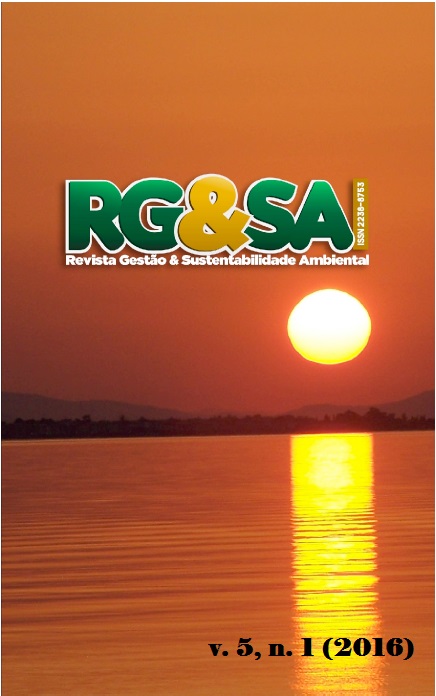FLOCCULATION EFFICIENCY OF THE ENVIRONMENTAL ASSESSMENT AND THE RECOVERY OF THE BIOMASS OF MICROALGAE GROWN IN PHOTOBIOREACTORS INDUSTRIAL COMPACT
DOI:
https://doi.org/10.19177/rgsa.v5e1201692-118Keywords:
Microalgal biomass, flocculation, compact industrial photobioreactors, Life Cycle Assessment (LCA).Abstract
In this article were evaluated flocculation and environmental efficiency of flocculation agents: iron sulfate (FeCl3), sodium hydroxide (NaOH), calcium hydroxide (Ca(OH)2) and aluminum sulfate (Al2(SO4)3). For the flocculation efficiency analysis tests were conducted to determine the optimal concentration of each flocculant agent for Scenedesmus sp species., and the environmental assessment was conducted a Life Cycle Assessment (LCA) with the help of the software SimaPro 7.3 using CML method 2000. The results indicated, that the FeCl3 and Al2 (SO4)3 were highly effective for the recovery of microalgal biomass and they had lower environmental impact, however, when using the FeCl3 there was an immediate change of biomass coloring After addition of salt to a strong shade of orange, which can be associated with the iron present and the use of Al2(SO4)3 may compromise the use of biomass due to some authors associates it with the occurrence of Alzheimer's disease, being restricted the application of biomass recovered through this process for nutritional purposes, therefore, for this work it was noted that the NaOH had lower emissions in virtually all categories examined CML 2000 except for abiotic depletion and terrestrial ecotoxicity, however, was considered the standard flocculating agent such analyzes, since coagulation promoted as efficient values as 93.5% and with better environmental profile between which flocculating agents caused no visible color change in the biomass, together with the coupling technologies flocculation and centrifugation to obtain wet biomass and flocculation and thermal drying to dry biomass. The results show that it is important to consider both aspects of effectiveness of flocculation and environmental impacts to identify the best coagulants in industrial scale. However, further studies are necessary with natural coagulants such as chitosan which is manufactured from fishing waste being an alternative to improve the environmental profile of the process, as well as the use of tannin, however, these suggestions have to be analyzed in future.
Downloads
Published
Issue
Section
License

O trabalho Revista Gestão & Sustentabilidade Ambiental foi licenciado com uma Licença Creative Commons - Atribuição - NãoComercial - CompartilhaIgual 3.0 Brasil.
Com base no trabalho disponível em www.portaldeperiodicos.unisul.br.








